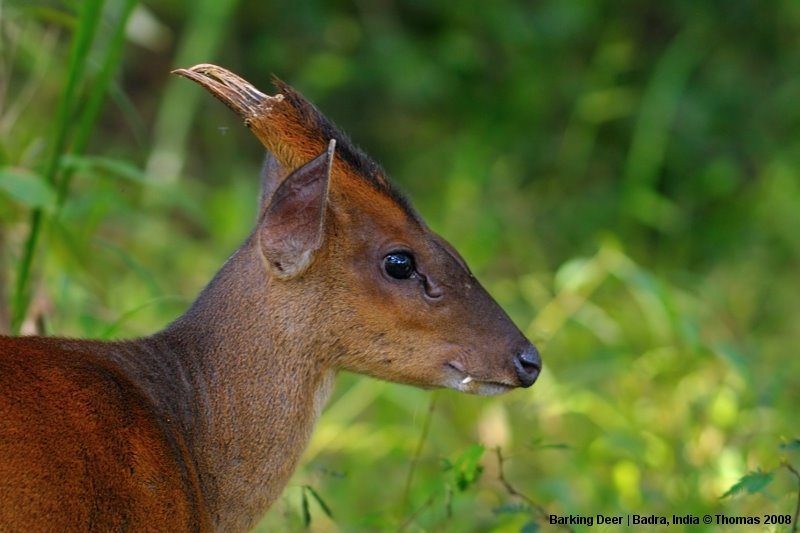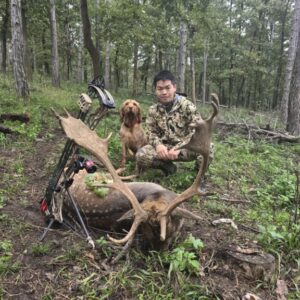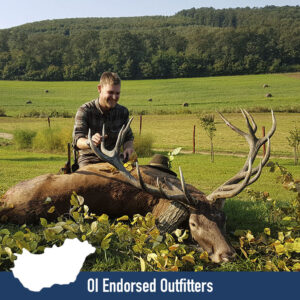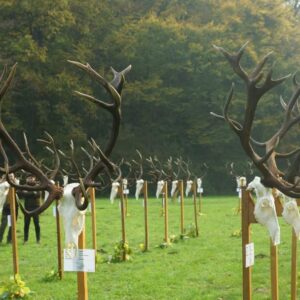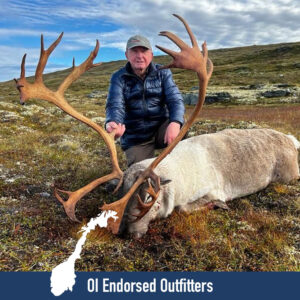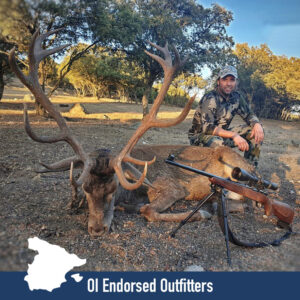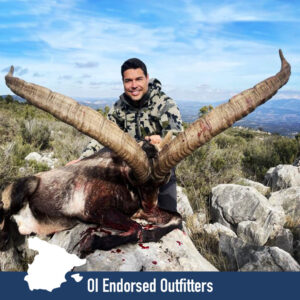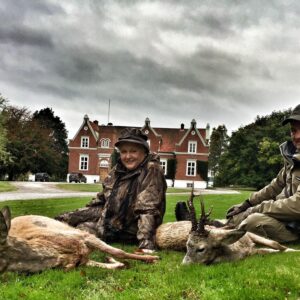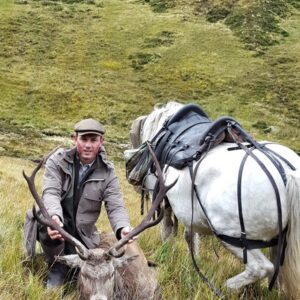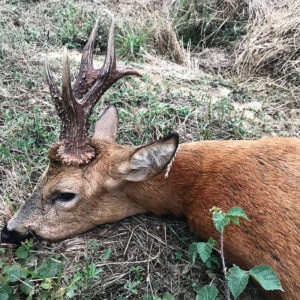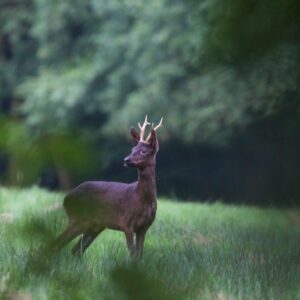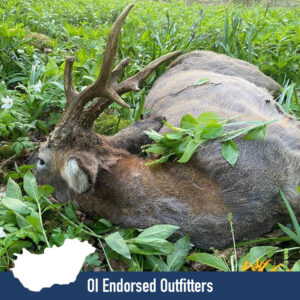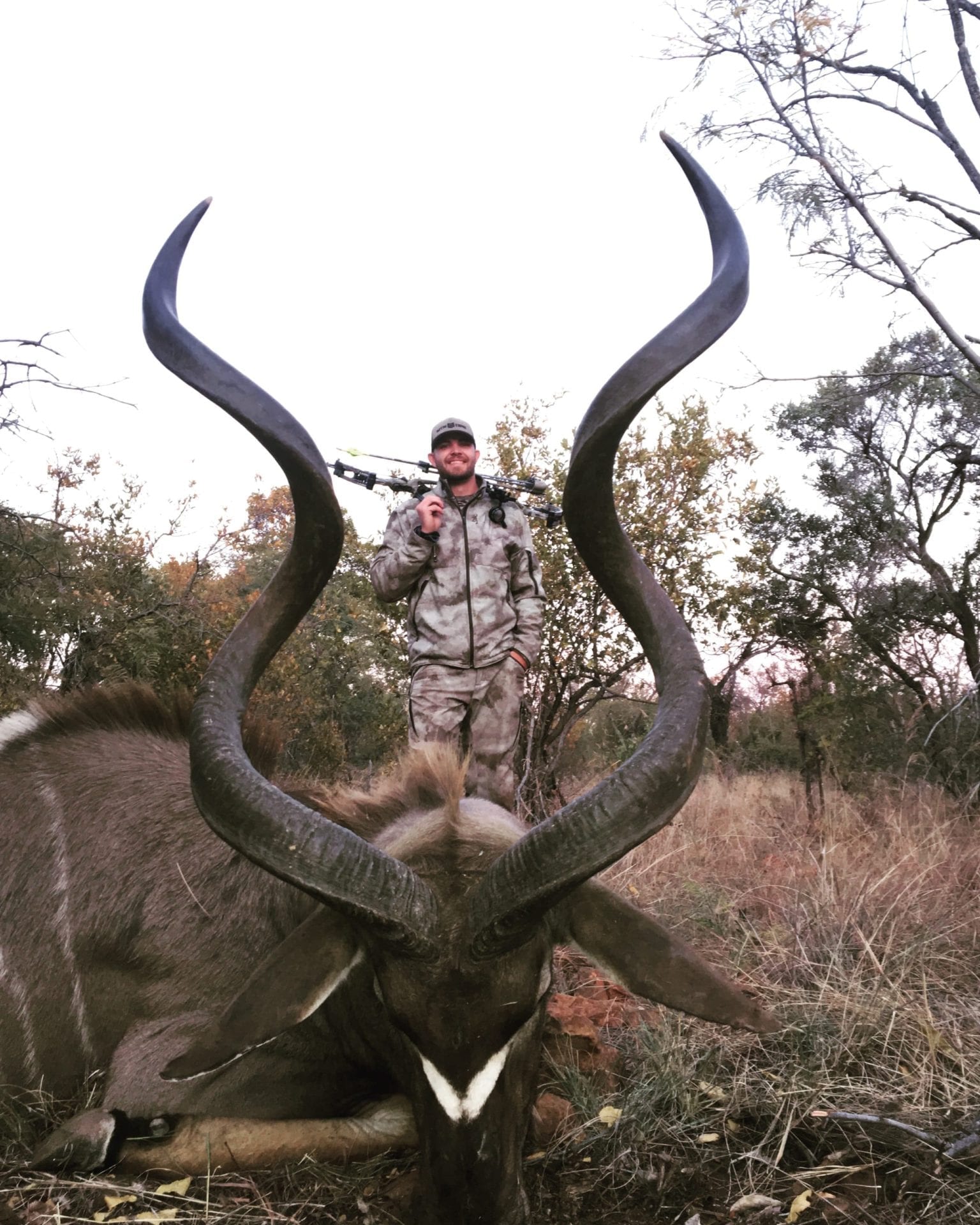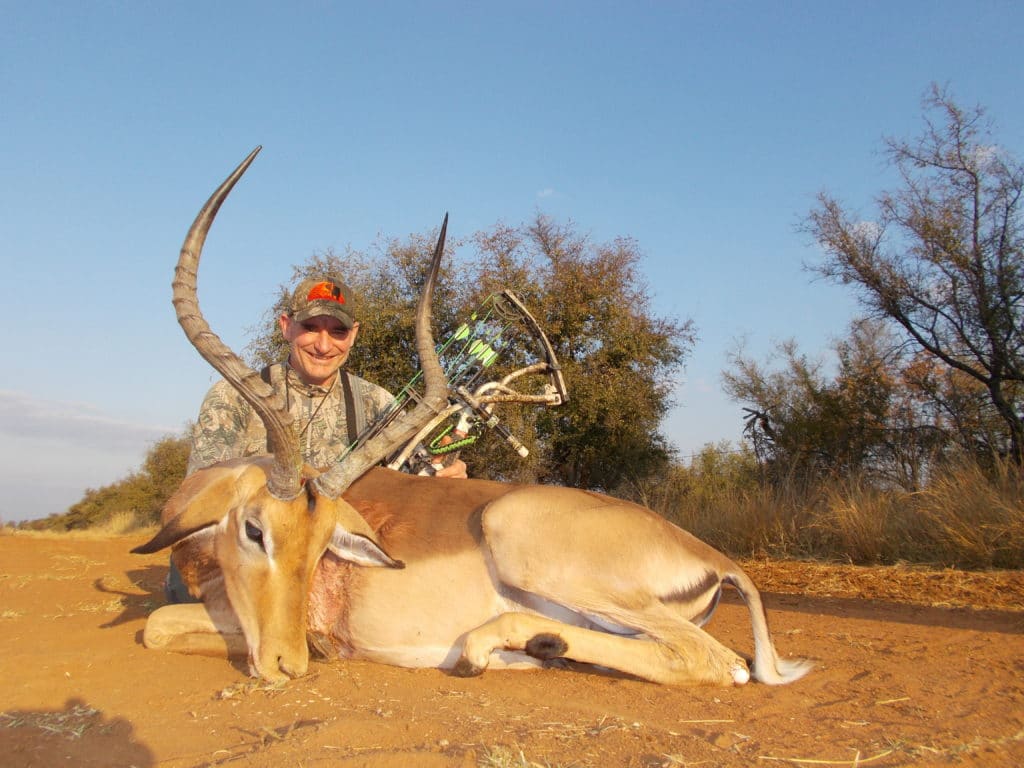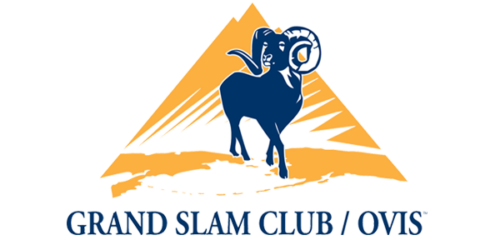Muntjac were originally residents of Asian deciduous and coniferous woodland where they are now endangered. Now they are a common species when hunting in Europe. They are the smallest of the six species of wild deer in Britain. Accidentally introduced to Woburn abbey in the 19th century which then led to being incorporated into the British Deer Society officially and recognizing them as a UK huntable deer species.
They have proven themselves very successful in establishing themselves in British countryside. As well as private gardens. Populations can reach very high densities and can cause a lot of crop damage. In the wild the life span can be up to 10 years old and captivity 16 years, but this is exceptional.
Muntjac differ from all other species of deer in Britain because there is no defined breeding season or rut time. They are capable of breeding from just 8 months old with a gestation period of only 7 months, normally giving birth to 1 fawn and are able to breed again within days after giving birth. Be careful when culling doe’s as they breed all year and you may not see a young fawn.
Although there is no actual muntjac hunting season, winter stalks in January to March when the grass is short are most productive. Early evening /morning hours tend to be the most productive either as a walk and stalk or from high seats. Unfortunately in the UK, bow hunting is illegal but for rifleman, the minimum caliber is .223 with a minimum bullet weight of 50 grains and a minimum muzzle energy of 1000 ft. lbs; the .243 Win being most common.
European Hunts Offered by Outdoors International
A common name for the Muntjac is “Barking Deer.“
This comes from the loud bark given when alarmed and or as communication between adults. Adult body weight ranges from 10 KG to 18 KG (22-40lb). Bucks (adult male) are slightly larger than Doe’s (adult female) but larger weights have been recorded.
Muntjac are russet brown in their summer and dark brown in their winter.
Bucks have long pedicles with short antlers of about 5” or 10 cm long, shedding in May to July and growing new antlers over the summer. They have visible canine tusks about 1” long or 2-3cm, although smaller than Chinese Water Deer (CWD) tusk which can be more than 3-4 times longer and without any antler. Both bucks and does have very large facial glands below the eyes. They have a short wide tail held high like a whitetail when alarmed.
Live Like You Mean It
Contact Us
We've helped thousands of OI clients plan their adventures
Our team of professional consultants are ready to help you research, book and plan an amazing trip with one of our amazing outfitter partners around the world.
I didn't think an experience like this was possible.
This trip, was, for me at least not just a trip, for me it was a real adventure, a real experience. I love the wilderness and this trip afforded me the opportunity to connect with the Alaskan wilderness in ways very few people do. It was an experience I will never forgot in a place I can’t wait to get back to.Oliver Fischer
The outfitter handled everything perfectly.
We were thankful that Outdoors International hooked us up with a great outfitter because they were able to find us an acceptable alternate on short notice. Overall the two year process to get this float in was seamless and worry free. Just like it should be.Thank you, Stan Masneri
What an amazing experience!
The lodge was out of this world! Our rooms, the delicious food, the incredible wildlife and the scenery were amazing. Our photo safari guide was truly exceptional and had us on animals almost constantly. We saw over 30 different species and had some incredible up close experiences. Africa is amazing!Scott Navares
Copyright 2005-2025 © Outdoors International™ · All Rights Reserved.


